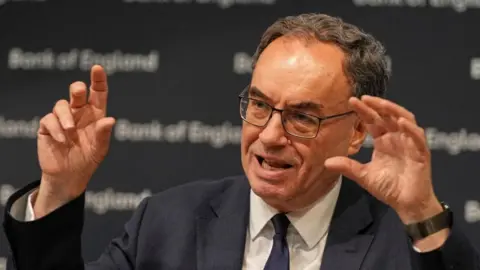Bank of England Signals Potential Interest Rate Cuts Amid Economic Concerns
Bank of England Signals Potential Interest Rate Cuts Amid Economic Slowdown
In a recent interview, Bank of England Governor Andrew Bailey indicated a potential shift towards implementing larger interest rate cuts if the labor market shows signs of weakening. This proactive approach reflects the central bank’s strategy to manage the UK’s economic landscape and stimulate growth amid potential headwinds.
Currently, the base interest rate stands at 4.25%. The Bank’s Monetary Policy Committee (MPC) is scheduled to review this figure at its upcoming meeting on August 7th. These rates have a significant impact on millions of Britons, affecting mortgage payments, credit card interest, and the returns on savings accounts.
Bailey highlighted that the economy is growing below its potential, creating “slack” which he believes will help bring down inflation. He pointed to consistent signals from businesses, suggesting they are “adjusting employment and hours” and moderating pay increases. This is partially attributed to Chancellor Rachel Reeves’ decision to increase employer National Insurance contributions.
Reeves’ move to increase national insurance rates for employers from 13.8% to 15% in April of this year is expected to generate £25 billion annually for the government. Bailey noted this as a factor influencing the labor market and the Bank’s outlook on interest rates. However, he emphasized the Bank’s continued cautious approach, using the phrases “gradual and careful,” particularly given that inflation remains above target.
The Bank of England held interest rates at 4.25% at its June meeting, following two earlier cuts this year. The latest figures show the UK economy contracted by 0.1% in May, following a similar contraction in April, according to the Office for National Statistics. This downturn, driven primarily by a decline in manufacturing and weak retail sales, puts added pressure on the government, which has prioritized boosting economic growth.

The Bank of England’s stance suggests an adaptive strategy, prepared to loosen monetary policy further if economic conditions deteriorate. This proactive approach aims to support businesses and consumers during a period of economic uncertainty, while keeping a watchful eye on inflation trends.


Post Comment